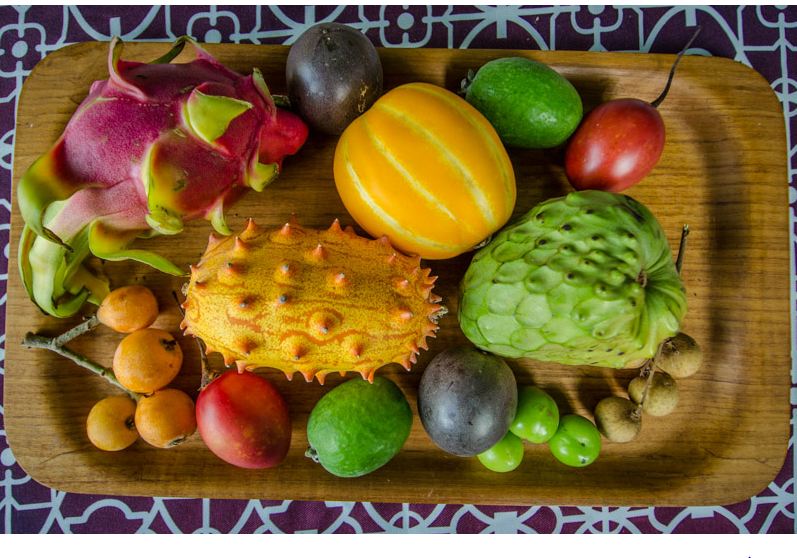


Strange fruits and vegetables often surprise us with their unique characteristics. From the horned melon, resembling a spiky cucumber with a banana-like taste, to the durian’s infamous odor that’s banned in some places, these unusual offerings challenge our palate. The cherimoya, with its custard-like texture, captivates taste buds despite its toxic seeds. Finally, the kumquat, a citrus fruit like no other, offers a sweet rind and sour flesh. These unconventional choices add excitement and diversity to our culinary experiences.
Horned melon
The horned melon, also referred to as “blowfish fruit” in the U.S., belongs to the cucumber and melon family and originates from Africa. It has gained popularity globally and goes by various names, including African horned cucumber, jelly fruit, and English tomato. When consumed, this unique fruit offers a distinctive experience akin to biting into a cucumber with a delightful banana-like flavor, making it a flavorful and exotic addition to diverse cuisines.
Mangosteen
The Mangosteen, encased in an inedible, acorn-like shell, hides a luscious, tangy-sweet interior. An intriguing legend harks back to Queen Victoria, who once promised a generous reward of 100 sterling pounds to anyone who could bring her this exotic fruit. This historical anecdote likely contributes to its distinctive title as the “Queen of Fruits,” a name that perfectly encapsulates the fruit’s regal aura and tantalizing flavor.
Durian
The durian, characterized by its spiky exterior, is not the ideal choice for sports due to its formidable appearance. Within its tough shell lies a fruit notorious for evoking strong reactions, both positive and negative, primarily due to the potent odor it emits. This aroma is so pervasive that it can permeate the husk even when intact, leading to its prohibition in select Southeast Asian hotels and some public transportation, reflecting the polarizing nature of this unique and pungent fruit.
Cherimoya
Resembling slightly battered green apples, cherimoyas are a fruit hailed by Mark Twain as “the most delicious fruit known to men.” These soft and fleshy delights possess a sorbet-like texture, earning them the moniker “custard apple.” However, it’s worth noting that their seeds are toxic when crushed open, and an extract from the bark carries the potential to induce paralysis. Despite these precautions, the cherimoya’s exquisite flavor and custard-like consistency make it a sought-after and unforgettable tropical treat.
Kumquat
Concluding our list with a less exotic but intriguing choice is the kumquat, a small, edible fruit closely resembling an orange. Native to South Asia and the Asia-Pacific region, the kumquat stands out for its unique flavor profile. Unlike most citrus fruits, the raw rind of a kumquat is sweet, while its flesh offers a contrasting, tart, and acidic taste reminiscent of lemons. Despite its familiarity, the kumquat provides a distinctive citrus experience appreciated by many.